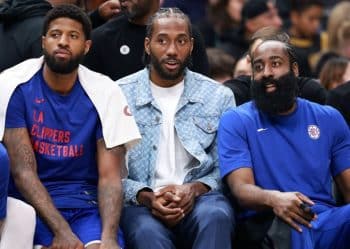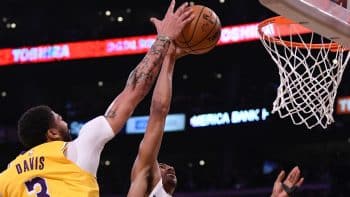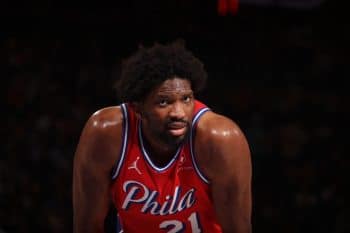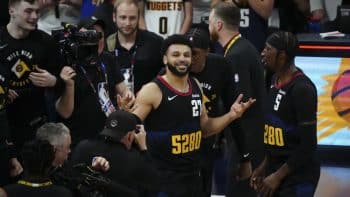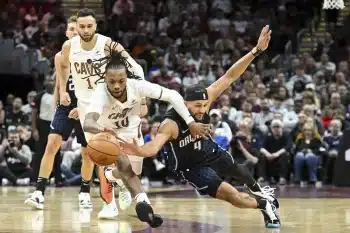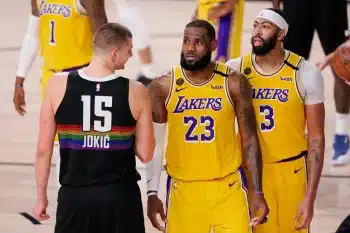NBA
NBA Sunday: Andre Drummond Is For Real

When people think of the island of Jamaica, a few things may immediately come to mind: Bob Marley and reggae music, Usain Bolt, Rastafarians, beautiful beaches and (if you’re fortunate enough to have had the experience) delicious food.
One thing that is slowly but surely becoming synonymous with Jamaica and Jamaican immigrants, however, is basketball and NBA-level contributors.
Out in Detroit, slowly but surely, Andre Drummond has become the latest example.
Drummond, like Ben Gordon, Roy Hibbert, Ryan Hollins, Tristan Thompson, Anthony Bennett and Patrick Ewing, Jr., is a descendant of Jamaica.
When I met the center for the first time, Drummond was a rookie and a member of the Detroit Pistons’ public relations staff introduced us because I had begun researching and writing a book on the development of pro basketball in Caribbean and third-world countries. Prior to what should have been a cursory conversation with Ben Gordon, I was notified that Drummond was one of “my” people. I, like the aforementioned NBA players, am a first-generation American who was born to Jamaican immigrants. My parents made their way to the United States in the mid-1970s after their want for better caused them to leave their motherland in search of brighter fortunes in the United States.
Drummond, he told me, was approached by the president of the Jamaican Basketball Federation to play for Jamaica’s Senior Men’s National Basketball Team. Jamaica had just earned a berth in the 2013 FIBA Americas tournament by virtue of their winning a bronze medal in the 2012 Centrobasket Tournament in Puerto Rico. The thought from Jamaica and their coaching staff was that Drummond, along with Samardo Samuels and Jerome Jordan, would give Jamaica a fierce frontcourt that would destroy some of the more intimidating frontlines that they would encounter.
Jamaica had long believed that despite having seasoned professionals in their backcourt—Weyinmi Rose and Akeem Scott, most notably—that they needed more depth there. And that’s why I was visiting with the Pistons, curious about Gordon and whether he would appeal to FIBA so that he could play for Jamaica.
Of course, that conversation with Gordon never happened, because upon being introduced to Drummond, we spent the better part of the next 30 minutes discussing his upbringing in Mount Vernon, New York, what his life had been like thus far in the NBA, the biggest obstacles he had faced and what he wanted for himself.
I remember walking away from the conversation thinking to myself that Drummond seemed a bit too friendly and happy to be a difference-making big man at the NBA level. Over the years, we have exchanged pleasantries and I have kept close tabs on Drummond, again having an in-depth, one-on-one conversation with him during All-Star Weekend in Houston back in 2013.
Less than three years later, I never would have thought that he would have risen majestically as the centerpiece of the Pistons franchise, a key member of the United States Men’s National Basketball Team and possess all of the tools to be the most dominant center that the NBA has seen in a long time.
* * * * *
The term “addition by subtraction” is one that is used in the National Basketball Association all the time, but one of the finer examples of it, in the flesh, can be found with Stan Van Gundy.
It would have been most appropriate to describe the Pistons as a “dumpster fire” when Van Gundy took over the franchise in May of 2014. The team hadn’t qualified for the playoffs since 2009 and had recently invested a combined $80 million in the combination of Josh Smith and Brandon Jennings. Smith, Greg Monroe and Drummond didn’t seem to be a natural triumvirate in the frontcourt and, overall, the Pistons seemed to be a team that had some nice pieces that didn’t fit together.
Van Gundy made the difficult choice of waiving Smith and his team saw immediate dividends, going 12-3 over their first 15 games without him. The team seemed poised to make a run at a playoff spot before Jennings ruptured his Achilles tendon on January 25 of this year. Less than a month later, Van Gundy acquired Reggie Jackson from the Oklahoma City Thunder in exchange for D.J. Augustin, Kyle Singler and two second-round picks—not exactly a king’s ransom.

That, I am told, was due to the belief that Drummond has superstar potential as a throwback center in an NBA that is dominated by “stretch fours” and big men who like to do most of their damage from outside of the paint.
Slowly but surely, in no time at all, Van Gundy has rebuilt the Pistons in his image. Joel Anthony and Steve Blake represent veterans who have achieved success in this league, while Marcus Morris, Ersan Ilyasova and Aron Baynes each represent youngsters who have appreciable upside. For Van Gundy, these relatively young players join rookie Stanley Johnson as some pieces who, when combined, certainly have the potential to alter the trajectory of an entire franchise.
Now, all of a sudden, the Pistons are 3-0 and sit atop the Eastern Conference. Of course, sitting atop anywhere after three games isn’t much of an accomplishment, but the mere thought of the Pistons opening eyes and re-entering the conversation of respectable and contending team this quickly seemed like a long-shot when Van Gundy assumed the helm.
And, in the middle of it all, his program is built around a promising young guard in Jackson, and yes, an intimidating force in the middle in Drummond.
* * * * *
Through the first three games of the regular season, Drummond is averaging 18 points, 15.8 rebounds and 1.9 blocks. Unlike many of his peers, he has made his living in the paint, attempting approximately 75 percent of the shots he has taken in his career within three feet of the basket. While he still must improve on his passing out of the post and his ability to move without the basketball, Van Gundy has done a fine job of surrounding him with complementary pieces. Playing with and off of Jackson should help make the offensive side of the game easier for Drummond, while Morris and Ilyasova will each providing shooting and spacing threats alongside him in the front court. Jodie Meeks (once he returns from injury), Kentavious Caldwell-Pope and Steve Blake will provide similar help at the guard spots.
Like Monroe, Drummond isn’t expected to sign an extension with the Pistons, but he is almost guaranteed to ink a five-year maximum contract next summer. And with how quickly things have turned around in Detroit, Van Gundy opting to make Drummond his centerpiece is certainly understandable.
Sure, it may only have been three games and three victories over the Atlanta Hawks, Utah Jazz and Chicago Bulls, but if there is one team that has opened up some eyes after the opening week of the 2015-16 NBA season, it is the Pistons.
And the 22-year-old Drummond, a player I wasn’t sure of when we first met, is in the center of it all.
